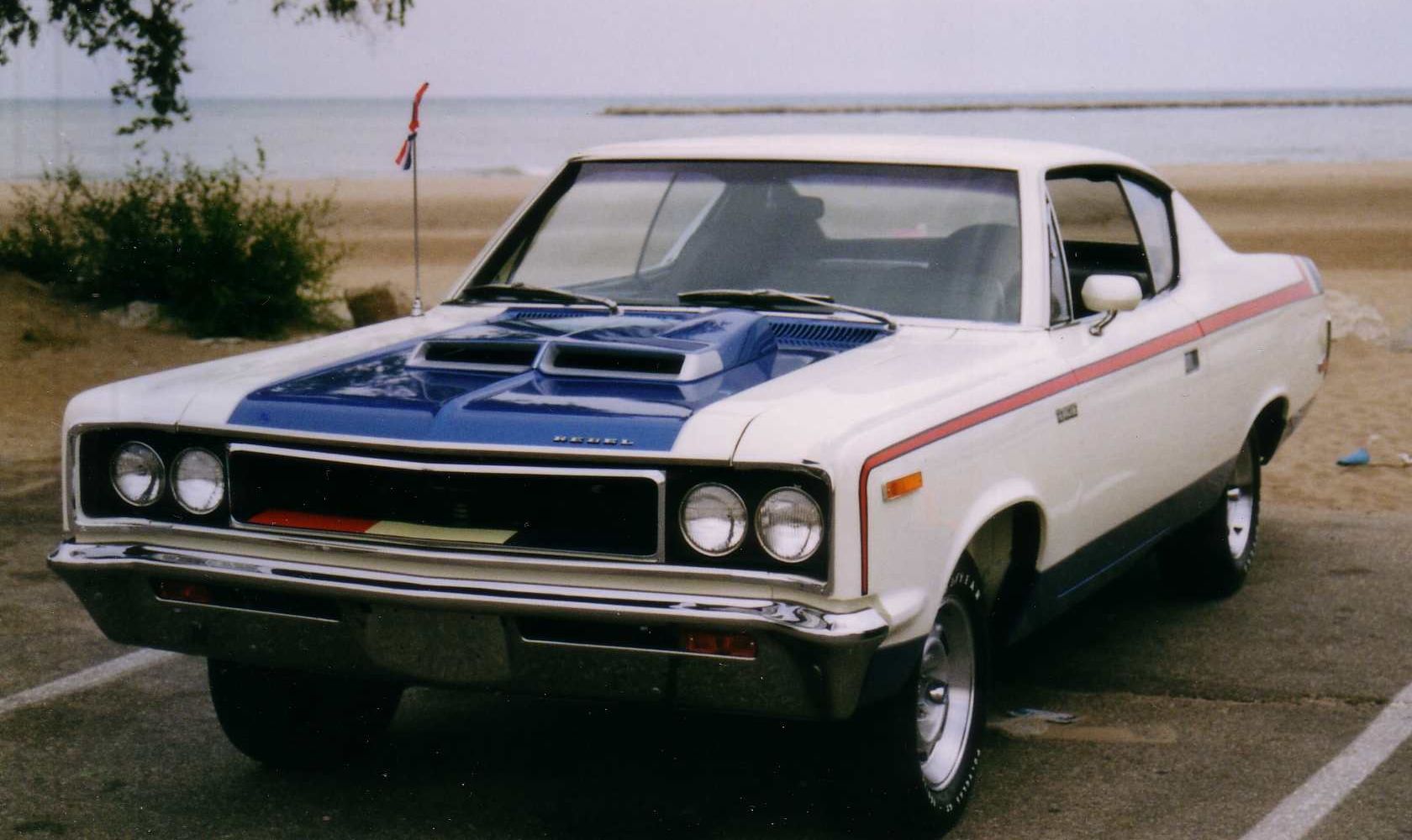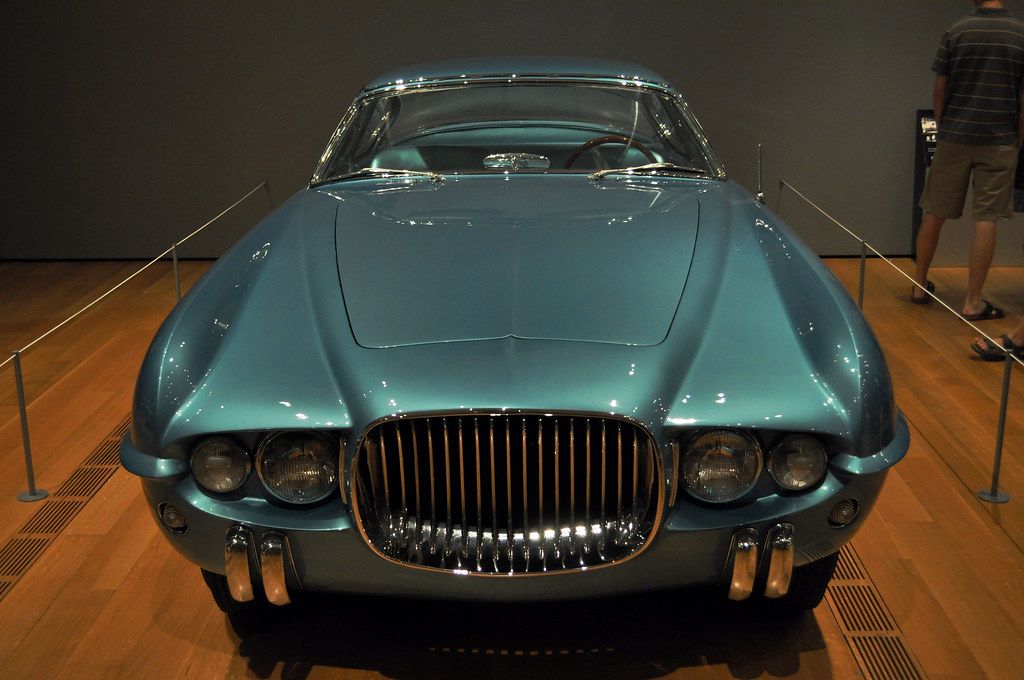
Ah, the muscle car. Just uttering those two words conjures images of roaring V8s, smoking tires, and iconic designs that defined an era of raw, unapologetic automotive power. These were machines built for speed, for show, for making a statement that echoed through every quarter-mile strip and Main Street cruise. They captured our imaginations, fueled our youthful dreams, and cemented themselves as legends in the annals of motoring history. But, as with any grand saga, there are always a few chapters we’d rather skip. Not every muscle car was a triumphant roar; some were more of a whimper, a confused cough, or an outright aesthetic disaster.
Indeed, for every high-octane hero, there lurked a less-than-stellar counterpart, a vehicle that perhaps aimed for glory but landed squarely in the realm of regrettable decisions. These aren’t just cars that were ‘okay’; these are the ones that genuinely baffled, disappointed, or simply failed to live up to the very essence of what a muscle car should be. Whether it was a profound lack of power, an engineering misstep, or a design so perplexing it made you question if the stylists were working in the dark, these machines earned their spot on a list no car manufacturer ever wants to be on.
So, prepare yourselves, because we’re about to embark on a journey into the automotive abyss. We’ve scoured the collective memory of enthusiasts, dug through the criticisms, and unearthed the truth about some of the most lamentable muscle cars ever to grace our roads. Forget your rose-tinted glasses; it’s time to face the unvarnished reality of these mechanical misfires. This isn’t just a list; it’s a critical evaluation, a necessary catharsis for anyone who truly loves what a muscle car *should* be. Let’s fire up the critique and delve into the first seven contenders for the title of ‘Worst Muscle Car Ever Made’.
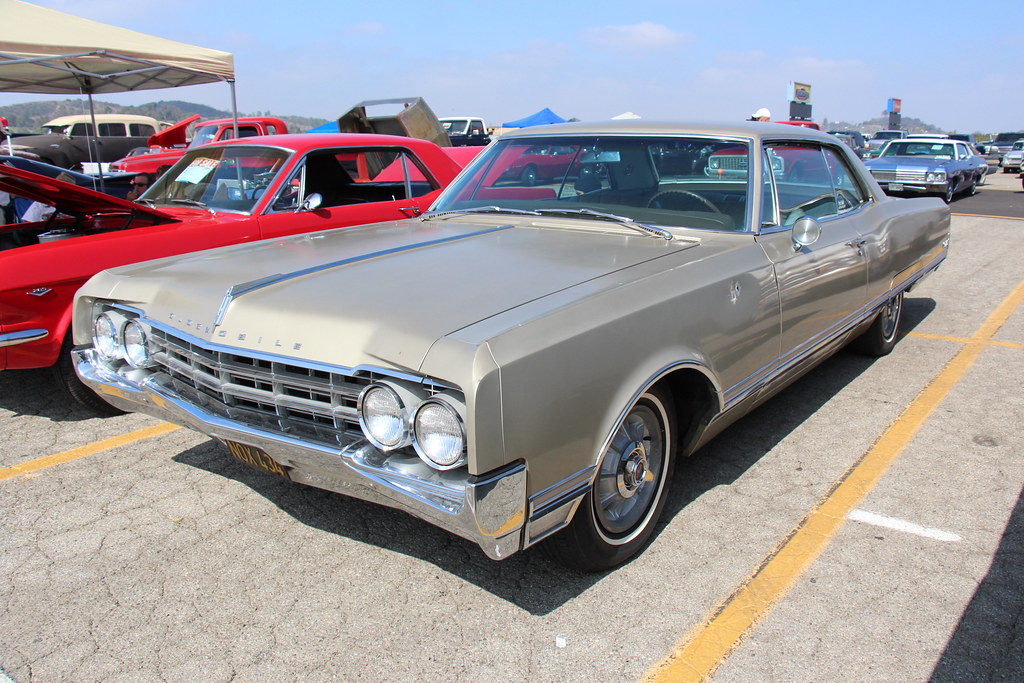
1. **The 1982 GM F-Body Cars (Camaro and Firebird)**Starting our journey into the valley of disappointment, we encounter the 1982 GM F-Body cars – specifically, the Camaro and Firebird models from that year. Now, if you asked any enthusiast about these, you’d likely get a common answer, and it wouldn’t be brimming with praise for their raw performance. This was an era where muscle seemed to be taking a long, unexpected nap, and these particular F-Bodies were practically comatose in the horsepower department. It’s hard to imagine a muscle car being this lethargic, yet here we are.
Let’s talk numbers, or rather, the distinct lack thereof. We’re discussing a V8 engine where the maximum horsepower was, astonishingly, something like 145. Yes, you read that correctly – 145 horsepower. In a muscle car! That’s not just anemic; it’s practically a medical condition. For context, many modern compact cars offer more punch. Coupled with questionable handling and what felt like a less-than-robust construction, these F-Bodies struggled to embody the very spirit they were supposed to represent. It was a performance deficit that left a bitter taste in the mouths of anyone expecting a true muscle experience.
However, it wasn’t all bad, at least from a purely visual standpoint. What these F-Body cars did possess, in spades, was style. Those iconic tucked-away headlights, the sharp, angular lines that screamed ‘eighties cool’ – these cars genuinely looked the part. They had a certain undeniable swagger, a visual promise of excitement that, sadly, the powertrain simply couldn’t deliver on. It was a classic case of all show and absolutely no go, a visual feast that left your stomach rumbling from hunger.
Today, the legacy of these F-Bodies is, shall we say, a bit complicated. One observer rather pointedly suggested they have “evolved into the car the most successful meth dealer in the trailer park drives.” While perhaps a touch harsh, it perfectly encapsulates the somewhat tarnished reputation these vehicles earned, a testament to how far their performance fell short of their aggressive, stylish looks. A truly memorable failure, if for no other reason than the sheer audacity of its underpowered ambition.

2. **The Current Dodge Challenger/Charger**Next, we roll up to a more contemporary contender, a pair that sparks considerable debate: the current Dodge Challenger and Charger. Now, before the cries of ‘blasphemy!’ begin, hear us out. While undeniably popular, these vehicles have earned a spot on our list for what some perceive as a fundamental lack of innovation and a reliance on bygone glory. As one submission succinctly put it, it’s “A 20+ year old Mercedes chassis cosplaying as a retro muscle car.” And when you look closely, it’s hard to argue with that rather pointed assessment.
The core criticism here isn’t necessarily about performance – later models certainly rectified some of that – but about progress, or rather, the distinct lack of it. These cars, in their current iteration, simply “doesn’t advance the species like the Camaro/Mustang (hey, we can take corners now too!).” Instead, they lean heavily into pure nostalgia, offering a modern package for those who desire the muscle car aesthetic without the inconvenient realities of owning an original era car. It’s a sentiment that resonates with many who feel modern muscle should push boundaries, not just revisit them.
Digging into the technical details, the Charger rides on a lightly modified version of its original 2005 platform, a chassis it initially shared with the decidedly non-muscle Dodge Magnum. The Challenger, in turn, utilizes a shortened version of that very same Charger chassis. While the common misconception that these platforms come directly from the Mercedes E-Class isn’t entirely accurate, it’s equally true that neither represents “a modern clean-sheet redraw.” This reliance on older bones, however capable they may be, ultimately detracts from their claim to true muscle car advancement.
Of course, critiquing these titans is bound to ignite some passionate arguments, as noted by the submission’s preemptive call to “[Dons flame suit.]” Yet, the sentiment persists: while they offer a potent dose of yesteryear, their underlying architecture and approach to the segment often feel like a standstill rather than a leap forward. For many, a true muscle car should be a beast that evolves, not just one that puts on an impressive retro costume year after year.
Car Model Information: 2022 Dodge Challenger R/T Scat Pack
Name: Dodge Charger
Caption: 1969 Dodge Charger
Manufacturer: Dodge
Production: 1966–1978,1981–1987,2005–present
ModelYears: 1966–1978,1982–1987,2006–present
Categories: 1960s cars, 1970s cars, 1980s cars, 2000s cars, 2010s cars
Summary: The Dodge Charger is a model of automobile marketed by Dodge in various forms over eight generations since 1966.
The first Charger was a show car in 1964. A 1965 Charger II concept car resembled the 1966 production version.
In the United States, the Charger nameplate has been used on mid-size cars, personal luxury coupes, subcompact hatchbacks, and full-size sedans.
Get more information about: Dodge Charger
Buying a high-performing used car >>>
Brand: Dodge Model: Challenger/Charger
Price: $50,991 Mileage: 1,771 mi.
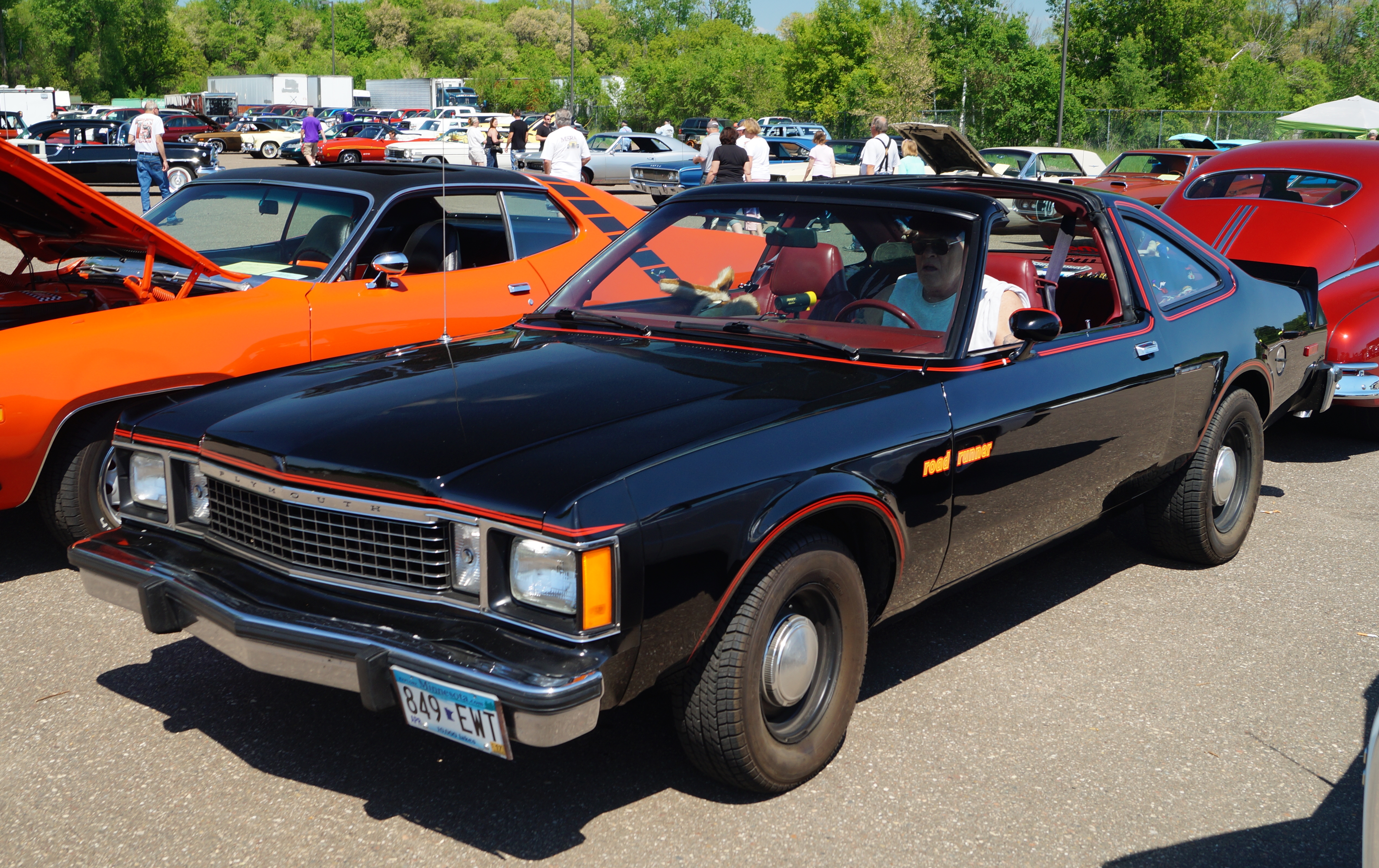
3. **The Volare Road Runner and Aspen R/T**Ah, the 1970s. A decade that gifted us many things, but when it came to muscle cars, it often delivered a special brand of disappointment. Case in point: the Plymouth Volare Road Runner and its sibling, the Aspen R/T. If you thought the F-Body cars were underpowered, then you might need to recalibrate your expectations, or perhaps your sense of humor. Because these machines took the concept of anemic performance to a truly remarkable, almost mind-altering, level.
Let’s address the elephant in the room, or rather, the exceptionally small and confused elephant under the hood. These cars “made a mind-altering 170 hp back in the ’70s.” The sarcasm here is practically palpable, and for good reason. 170 horsepower, even in the power-choked 70s, was hardly the stuff of muscle car legend. To add insult to injury, the torque figure, while a more “staggering 280 ft-lbs,” still felt utterly inadequate for anything pretending to be a performance vehicle. This wasn’t muscle; it was more like a mild flex from a teenager who skips arm day.
Compounding the issue was the transmission situation. All V8 models of these cars shared a gearbox that boasted “three whole speeds.” Three! In an era where even some family sedans offered more sophisticated setups, a three-speed transmission in something aspiring to be a Road Runner or an R/T felt like a cruel joke. It limited both acceleration and highway cruising comfort, further cementing their status as cars that simply weren’t built for purpose, despite the badges.
One particularly cutting observation declared, “This isn’t a muscle car, it’s something out of the Jetsons — the car of the future, right here in the mid-1970s.” This playful yet brutal comparison highlights the disconnect between the cars’ aspirations and their rather pedestrian reality. They wore the names of legends but delivered the performance of a grocery getter, making them prime examples of how not to carry a hallowed nameplate forward.
Read more about: Unearthing the Power: 14 Underrated Small-Block V8 Muscle Cars That Deliver Classic Style and Serious Punch on a Budget
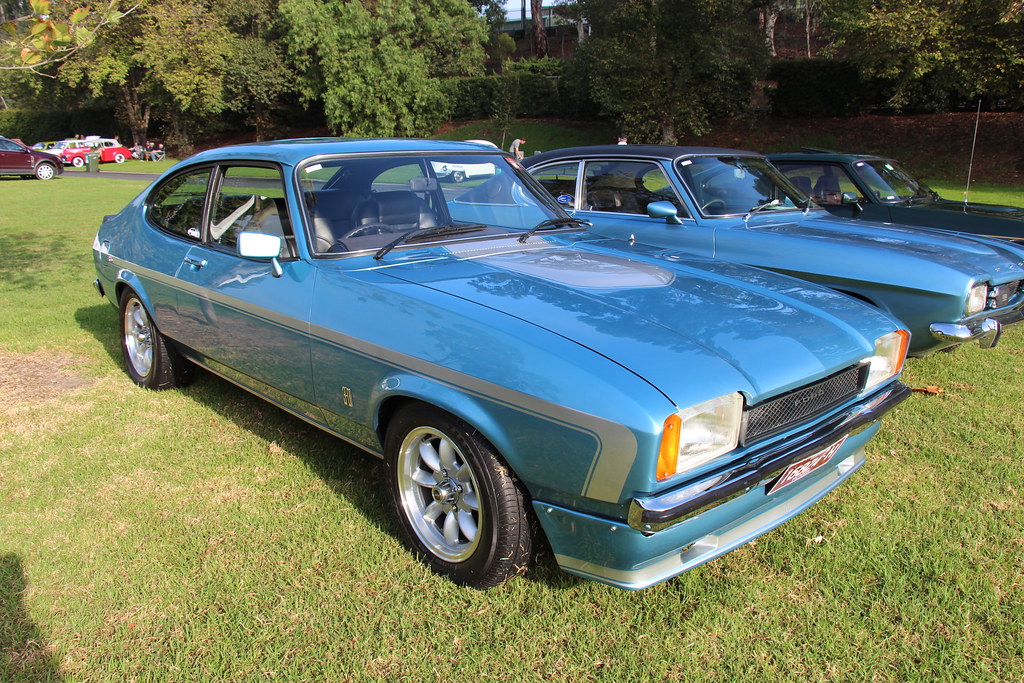
4. **Mid-2000s Ford/Dodge Entry-Level V6s**Moving forward in time, we land squarely in the mid-2000s, a period that saw another wave of muscle car missteps, particularly at the entry level. This was a span where both Ford and Dodge, in their wisdom, decided to equip their base-model muscle cars with engines that were, to put it mildly, “anemic and paired with horrible transmission.” It was a recipe for disappointment, serving up cars that wore the badges of performance icons but delivered anything but a thrilling driving experience.
Consider the specifics: the Dodge Challenger/Charger could be had with a 2.7L V6 engine churning out a mere 185 horsepower, mated to an ancient 4-speed automatic. Not to be outdone, the Ford Mustang, an icon of American performance, offered a 3.7L V6 with a slightly better, but still pedestrian, 210 horsepower, paired with a 5-speed auto. These numbers, even for a base model, barely whispered ‘muscle car’; they certainly didn’t shout it.
The real kicker, however, was the resulting performance. Both of these variants were described as being “slower than sin,” a vivid and accurate portrayal of their sluggish acceleration. Zero to sixty times lingered in the agonizing 9-10 second range, a figure that would make even a modest modern sedan blush with embarrassment. For vehicles carrying such legendary names, this kind of performance was simply unacceptable, undermining the very premise of what a muscle car should be.
There was an attempt to justify these powerplants, of course, with one commentator sarcastically musing about the 2.7 liter V6 in the original Charger: “it never made much power, revved very high, made good torque, been reliable, sounded good…” before admitting, with a touch of wit, that the main “benefits to that engine” was that “It sure did offer a cheaper entry point for Charger buyers.” Essentially, it was a price point, not a performance statement, and for that, these V6-powered muscle cars earn their dubious honor.

5. **The 2003-2004 Mach 1**Stepping into the early 2000s, Ford gave us the 2003-2004 Mach 1, a car that, while visually striking, drew heavy criticism for feeling like a cynical exercise in parts-bin engineering. It wasn’t just a misstep; it was, as one passionate owner declared, “a blatant cash grab.” And when you dissect its components, it’s difficult to argue with that rather damning assessment.
Underneath the iconic shaker scoop, the Mach 1 was essentially a mishmash of components. It featured a 99-01 Cobra engine, which itself had a somewhat troubled history, then bafflingly tied to a solid rear axle. Adding to this curious engineering cocktail were convertible frame braces, presumably for stiffness, but raising questions about the platform’s suitability for a performance variant. And the tires? “Stock tires are Goodyear 245/45/17s and they have ZERO grip,” a fatal flaw for any car claiming the Mach 1 mantle.
Then there was the styling package. The “Shaker Scoop, unique hood, and a graphics/styling package that was INSTANLY copied by every V6 owner in existence” meant that its distinct visual identity was quickly diluted. What was meant to be special became ubiquitous, further eroding its unique appeal. The attempt to create exclusivity often backfired when mass-market imitators could so easily replicate the look without the (limited) performance to back it up.
Despite the criticisms, there’s an interesting dichotomy with this car. As one owner admitted, “I love mine, but its always apparent that it was built to use up leftover parts in the factory until they realized they could make bank off of boomers.” This self-aware commentary perfectly captures the Mach 1’s identity crisis: a car both loved for its aesthetic and simultaneously reviled for its cynical creation. It’s a prime example of a car that looked incredible, even becoming “one of (if not the singular) best-looking generations of Mustang ever built,” but whose engineering foundation left much to be desired.
Car Model Information: 2024 Ford F-150 XLT
Name: Ford Mustang Mach 1
Manufacturer: Ford Motor Company
Assembly: Dearborn, Michigan
Production: 1969–1978,2003–2004,2021–2023
Class: Muscle car
BodyStyle: coupe
Layout: FR layout
Categories: 1970s cars, 2000s cars, 2020s cars, All Wikipedia articles written in American English, All articles needing additional references
Summary: The Ford Mustang Mach 1 is a combination performance and appearance package offered as an option for the Ford Mustang.
It first appeared in August 1968 for the 1969 model year, and ran through 1978. After a long hiatus it briefly returned in 2003-2004, and most recently between 2021 and 2023.
The first generation of the package, available with various engines, debuted at its hottest, then was progressively eroded in performance as emissions controls, unleaded gas, fleet mileage quotas, and higher gasoline prices undercut the “horsepower wars” that had originally spurred the option. Similarly, early packages included other performance upgrades, such as suspension, that were deleted in subsequent model runs, leaving only a wide array of external and interior upgrades.
As part of a Ford heritage program, the Mach 1 package returned in 2003 as a high-performance version of the New Edge platform. Visual elements paying homage to the 1969 model were integrated into the design. This generation of the Mach 1 was discontinued after the 2004 model year, with the introduction of the fifth generation Mustang.
The Mach 1 returned again in 2021 in the sixth generation Mustang, offering marginally more power than the high-performance 5.0 L Coyote V-8 in the base GT V8, but borrowing front and rear subframes from the Shelby GT350 and various parts from it and the Shelby GT 500 models. It was produced until the debut of the seventh generation Mustang following the 2023 model year.
Get more information about: Ford Mustang Mach 1
Buying a high-performing used car >>>
Brand: Ford Model: Mach 1
Price: $41,604 Mileage: 9,645 mi.
Read more about: Gone But Not Forgotten: Unearthing the Stories Behind 14 Iconic American Cars That Drove Off into the Sunset
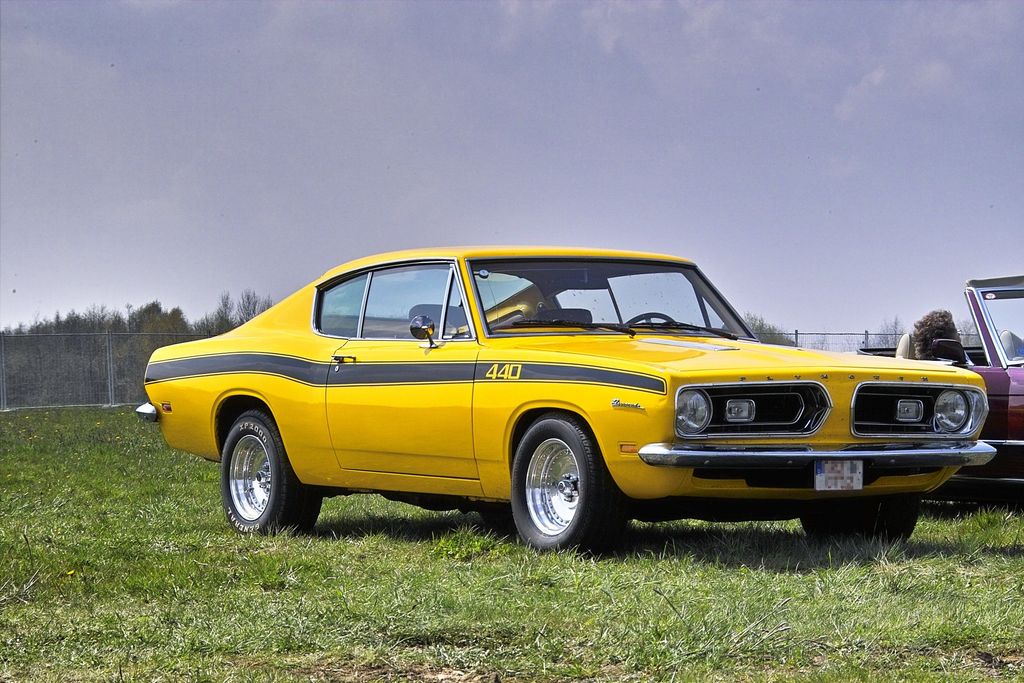
6. **The 1969 Barracuda**Now, let’s take a trip further back in time to 1969 and talk about a car that, for one unlucky owner, was described with unflinching honesty as “a real dumb piece of shit.” We’re talking about the 1969 Barracuda, a vehicle that, despite its potential, seemed to excel primarily at generating disappointment in its driver. It’s a harsh judgment, but one born from direct experience with its myriad shortcomings.
This Barracuda, in its owner’s experience, couldn’t do much “competently other than go in a straight line.” And even then, its straight-line prowess was hampered significantly. The engine it came with was “mismatched to the size of the vehicle, making its acceleration and top speed…poor.” Imagine a muscle car that struggles to accelerate and hit decent top speeds – it’s like a chef who can’t cook, or a musician who can’t play. The fundamental purpose was simply missed, leaving behind a car that was frustratingly underachieving.
Beyond its engine woes, the Barracuda suffered from handling and braking issues that truly cemented its place on our list. It was apparently “too heavy for no good reason making it brake like a cement shithouse.” A heavy car that can’t stop effectively is not just annoying; it’s genuinely concerning. Add to that an aesthetic complaint that “the ass-end looked stupidly out of proportion with the rest of the vehicle,” and you have a car that was fundamentally flawed from multiple angles.
Interestingly, the response to this scathing critique was somewhat ironic: “So a big, old, heavy vehicle that couldn’t turn and barely accelerated? It sounds like you bought the perfect old-school muscle car.” This witty retort highlights the often-forgiving nature of nostalgia, but it doesn’t diminish the very real performance and design deficiencies of this particular Barracuda. It stands as a testament to the fact that not all classics are golden, and some muscle cars genuinely were a rough around the edges, or rather, completely unrefined.
Car Model Information: 1971 Plymouth Barracuda
Caption: 1970 Hardtop Coupe
Name: Plymouth Barracuda
Manufacturer: Plymouth (automobile)
Production: 1964–1974
Assembly: Fenton, Missouri,Hamtramck, Michigan,Maywood, California,Windsor, Ontario
Layout: Front-engine, rear-wheel drive layout
Class: Pony car
Categories: 1970s cars, All articles with dead external links, All articles with unsourced statements, Articles with dead external links from February 2018, Articles with dead external links from January 2022
Summary: The Plymouth Barracuda is a two-door pony car that was manufactured by Chrysler Corporation from 1964 through 1974 model years.
The first-generation Barracuda was based on the Chrysler A-body and was offered from 1964 until 1966. A two-door hardtop (no B-pillar) fastback design, it shared a great majority of parts and bodywork with the Plymouth Valiant, except for the distinctive wraparound rear glass.
The second-generation Barracuda, though still Valiant-based, was heavily redesigned. Built from 1967 through 1969, it was available as a two-door in fastback, notchback, and convertible versions.
The third generation, offered from 1970 until 1974, was based on the Chrysler E-body, exclusive to it, and the slightly larger Dodge Challenger. A completely new design, the two-door Barracuda was available in hardtop and convertible body styles.
Get more information about: Plymouth Barracuda
Buying a high-performing used car >>>
Brand: Plymouth Model: Barracuda
Price: $54,999 Mileage: 12,468 mi.
Read more about: 7 Iconic ’60s Classics: Unpacking the Million-Dollar Appeal of Automotive Legends

7. **The 1986 Pontiac 2+2**Finally, for this section, we pull up alongside the 1986 Pontiac 2+2, a vehicle born from the noble intention of homologation for NASCAR, but which ultimately landed with a resounding thud in the performance department. The very definition of a muscle car is a performance variant based on a more mundane base, like the GTO from the Tempest, or a SuperBee from a Coronet. The 2+2 attempted this, but sadly, it forgot the ‘performance’ part of the equation.
The car’s primary purpose was to homologate a new front end and an aero rear window for NASCAR competition, much like Chevy’s Monte Carlo SS Aerocoupe. However, what buyers received was a distinct letdown on the street. This 2+2 was saddled with a “wheezy 305 V8,” a powerplant that offered little in the way of excitement. Coupled with “piss poor gearing, and a single exhaust,” the entire package screamed anything but high performance. The summary was stark: “Crappy performance.” It simply didn’t have the grunt to match its racing intentions.
Homologation specials often walk a tricky line; sometimes they’re unappreciated in their own time, only to become legends later. Think of the stories of dealers cutting tails off Daytonas and Superbirds to make them sellable. But the Grand Prix 2+2 didn’t even manage that kind of ironic redemption. It was, and largely remains, a car that “isn’t appreciated in this time either.” Its purpose was admirable, but its execution for the consumer was undeniably flawed.
Despite its aerodynamic tweaks designed for the track, the real-world driving experience of the 2+2 left much to be desired. It wore the clothes of a racer but had the heart of a Sunday cruiser, and not a very enthusiastic one at that. It’s a perfect illustration of how a car built with a specific, high-performance goal in mind can utterly fail to translate that excitement to the road-going version, leaving enthusiasts bewildered and underwhelmed.”
, “_words_section1”: “1942
Having navigated the treacherous waters of underpowered engines and questionable engineering, our journey through the annals of regrettable muscle car history continues. But this time, we’re shifting gears from what’s under the hood to what’s on the outside, venturing into a realm where designers seemingly threw caution, and good taste, to the wind. Prepare yourselves, because we’re about to delve into the cars that, despite any potential grunt they might have hidden beneath their bonnets, simply looked… well, baffling. These are the machines that earned their scorn not for being slow, but for being, frankly, hard on the eyes. Welcome to the gallery of automotive aesthetic blunders, where form often fought function and lost spectacularly, leaving car lovers scratching their heads in collective bewilderment.
Car Model Information: 2024 Ford F-150 XLT
Name: Pontiac 2+2
Caption: 1965 Pontiac 2+2 Sports Coupe
Aka: Parisienne 2+2 (Canada)
Manufacturer: Pontiac (automobile)
Class: Full-size car
Production: 1964—1967 in the U.S.
Assembly: Pontiac Assembly,Pontiac, Michigan,Arlington Assembly,Arlington, Texas,Doraville Assembly,Doraville, Georgia,Fairfax Assembly,Kansas City, Kansas,Linden Assembly,Linden, New Jersey,South Gate Assembly,South Gate, California
BodyStyle: coupe,convertible
Engine: Pontiac V8 engine#389
Transmission: 3 or 4-speed manual, 3-speed automatic
Length: 214 in
Abbr: on
Height: 48 in
Wheelbase: 121 in
Related: Pontiac Catalina
Categories: 1970s cars, 2+2 coupés, All articles with unsourced statements, Articles with short description, Articles with unsourced statements from March 2017
Summary: The Pontiac 2+2 is a full size automobile that was manufactured by Pontiac, built on the B-body chassis. It debuted for the 1964 model year as a trim-only option for the Pontiac Catalina, with special door panels, bucket seats with a center console, and exterior badging. Pontiac marketed the 2+2 as the “big brother” to the popular Pontiac GTO.
Beginning in 1965 the name Catalina was no longer found on the car, although it was still an option on the Catalina. The 2+2 was equipped with a 421 cu in (6.9 L) V8 engine, dual exhaust, heavy-duty front springs as well as unique exterior body trim. It continued on the same platform, but became a separate Pontiac series for the 1966 model year. The 2+2 reverted to an option on the Catalina for 1967 and was discontinued in the United States the same year due to poor sales.
It continued as a series in Canada until 1970. All Canadian-built 2+2s were equipped with a Pontiac body on a Chevrolet chassis, with the full range of Chevrolet engines available from inline 6-cylinder to big-block V8.
The name 2+2 reappeared briefly in 1986 on the Pontiac Grand Prix 2+2 G-body “aerobody” coupe, of which 1,225 were built.
Get more information about: Pontiac 2+2
Buying a high-performing used car >>>
Brand: Pontiac Model: 2+2
Price: $41,604 Mileage: 9,645 mi.
Read more about: From Dust to Dollars: Record-Breaking Classic Cars Unearthed from Barns and Forgotten Garages
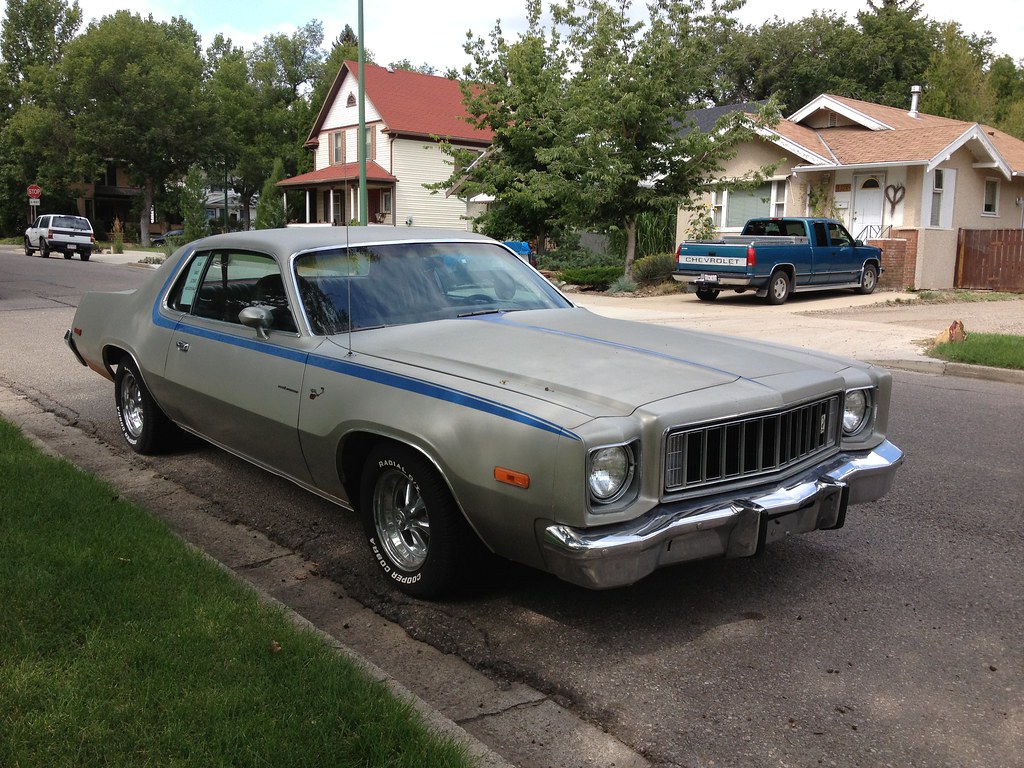
8. **The 1971 Plymouth Road Runner**After cruising through the disappointments of performance, we steer directly into the thorny issue of aesthetics with the 1971 Plymouth Road Runner. Now, the Road Runner name itself evokes images of raw, uncompromising muscle, a cartoon character brought to life with a roaring V8. But for 1971, performance enthusiasts were left “wept when Plymouth introduced its bloated 1971 Road Runner.” It wasn’t just a redesign; it felt like a betrayal of everything the nameplate stood for.
Gone was the lean, aggressive styling that characterized the earlier, beloved 1970 models. In its place emerged a vehicle characterized by “rounded curves and a less distinctive grille,” a visual softening that seemed utterly at odds with its brutish reputation. It was as if someone had taken a sleek predator and fed it too many cheeseburgs, resulting in a shape that felt cumbersome and lacked the sharp, menacing edge muscle cars were known for. The visual impact was decidedly less ‘beast of the quarter-mile’ and more ‘slightly confused whale’.
Compounding these aesthetic missteps was a physical transformation that further hindered its muscle car credentials. Plymouth’s redesign didn’t just change its looks; it “added nearly 200 pounds” to the vehicle. This extra bulk, even with the addition of the 340 V8, worked against the very essence of what made a Road Runner thrilling – its raw, unadulterated performance. It became heavier, softer, and crucially, lost that distinct visual identity that once made it an instant icon.
Ultimately, the 1971 Road Runner stands as a testament to how quickly a revered design can go astray. It’s a car that had serious power under its hood but simply “couldn’t outrun their awkward styling.” It’s a prime example of a design choice that baffled fans and left a legacy of head-scratching, proving that sometimes, less truly is more, especially when it comes to visual bulk on a performance machine.
Car Model Information: 2024 Ford F-150 XLT
Name: Plymouth Road Runner
Assembly: Detroit,Michigan
Manufacturer: Plymouth (automobile)
Class: Mid-size car
Production: 1968–1980
Related: unbulleted list
Layout: FR layout
Categories: 1970s cars, 1980s cars, All articles needing additional references, All articles with peacock terms, All articles with unsourced statements
Summary: The Plymouth Road Runner is a muscle car introduced by Chrysler in the United States for the 1968 model year and marketed under its Plymouth brand. Initially based on the Belvedere, the brand’s basic mid-size model, the Road Runner combined a powerful engine with a spartan trim level and a price that undercut increasingly upscale and expensive muscle cars such as the Pontiac GTO and Plymouth’s own GTX. It was initially a sales success.
The Road Runner was built in three generations on the mid-size B platform. Like most muscle cars, its performance and sales declined in the 1970s due to an increasing focus on fuel economy and the adoption of more stringent U.S. emission standards. The nameplate became to a trim package for the compact Plymouth Volaré for model year 1976—no longer offering any special performance capability—and was discontinued in 1980.
Get more information about: Plymouth Road Runner
Buying a high-performing used car >>>
Brand: Plymouth Model: Road Runner
Price: $41,604 Mileage: 9,645 mi.
Read more about: Gone But Not Forgotten: Unearthing the Stories Behind 14 Iconic American Cars That Drove Off into the Sunset

9. **The 1974 AMC Matador X**Next up on our parade of puzzling designs is the 1974 AMC Matador X, a vehicle born from AMC’s ambitious, albeit misguided, desire to compete with giants like the Ford Torino. Unfortunately for AMC, and for anyone who had to look at it, their design team seemingly “created what many consider automotive styling gone horribly wrong.” This wasn’t just a misstep; it was a full-blown tumble down the stairs of aesthetic sensibility.
The Matador X’s most egregious visual sins were concentrated at both ends, giving it a truly memorable, if not entirely flattering, profile. Upfront, it featured a “protruding, bug-eyed front end” that looked as though the car was perpetually startled or perhaps even a little bit offended by its own existence. This peculiar face was then paired with “an awkwardly sloping rear” that did little to balance the visual chaos, instead making the entire vehicle look “perpetually confused.”
Imagine a car that appears to be asking, “What did I do to deserve this?” every time you glance at it. That was the Matador X. It was a vehicle that struggled to find a cohesive line or a pleasing proportion, instead opting for a collection of design elements that simply didn’t gel. The ambition to carve out a niche was admirable, but the execution was, to put it mildly, an absolute spectacle of questionable choices.
Despite AMC’s intentions, the Matador X ultimately serves as a stark reminder that even with the best competitive aspirations, a car’s appearance can be its undoing. It became known as one of those “automotive eyesores” that had power but was overshadowed by “awkward styling.” It proves that sometimes, a design can be so utterly perplexing, so out of sync with prevailing tastes, that it becomes memorable for all the wrong reasons.
Car Model Information: 2024 Ford F-150 XLT
Caption: 1975 AMC Matador sedan
Name: AMC Matador
Aka: American Motors Matador
Manufacturer: American Motors Corporation
Production: 1970–1978
Assembly: Unbulleted list
Class: Mid-size car,Full-size car
Layout: Front-engine, rear-wheel drive layout
Predecessor: AMC Rebel,AMC Ambassador
Related: AMC Ambassador
Designer: Dick Teague
Categories: AMC vehicles, Adam-12, All articles with dead external links, All articles with unsourced statements, Articles with dead external links from July 2023
Summary: The AMC Matador is a series of mid- and full-size automobiles produced by American Motors Corporation (AMC) from 1971 through 1978 model years. Initially positioned as a mid-size family car, the Matador spanned two distinct generations: the first (1971-1973) featured two-door hardtop, four-door sedan, and station wagon body styles, while the second (1974-1978) transitioned to a full-size platform, offering two-door coupes as well as four-door sedans and wagons.
While aimed at the family market, the first generation Matador also saw performance-oriented versions. The two-door versions were successfully campaigned in NASCAR racing with factory support from 1972 until 1975.
After AMC discontinued the Ambassador line in 1974, the second generation Matador became the automaker’s flagship full-size model. Premium trim levels of the coupe, marketed as the Barcelona and noted fashion designer Oleg Cassini editions, targeted the personal luxury car segment.
The Matador sedan became popular as a police car in the United States and was prominently featured in several 1970s television series. The newly introduced Matador coupe was featured in the 1974 James Bond film, The Man with the Golden Gun
Internationally, the Matador continued to be marketed under the Rambler marque and assembled under license in Costa Rica, Mexico, and Australia. American Motors also exported right-hand-drive versions to markets such as the United Kingdom.
Get more information about: AMC Matador
Buying a high-performing used car >>>
Brand: AMC Model: Matador X
Price: $41,604 Mileage: 9,645 mi.
Read more about: Unraveling the Mystery: What Became of Jim Rockford’s Iconic Pontiac Firebird and the Cars of the Classic TV Series?

10. **The 1970 Ford Torino King Cobra**Now, for a truly rare specimen of aesthetic bewilderment, we present the 1970 Ford Torino King Cobra. Thankfully, for the collective sanity of car enthusiasts, “only three prototypes of this aerodynamic nightmare were ever built, thankfully sparing the public from mass-produced ugliness.” This wasn’t a car designed for beauty pageants; it was a singular, laser-focused creation “crafted to dominate NASCAR,” and boy, did its looks reflect that singular purpose in the most uncompromising way.
The defining feature, and indeed the most visually jarring aspect, of the King Cobra was its “dramatic drooping nose with hideaway headlights.” This wasn’t just a minor modification; it was a radical reinterpretation of the Torino’s front end, extending forward with an aggressive, almost reptilian snout. While undoubtedly designed to slice through the air on a superspeedway, on a normal road, it looked like a cartoon character that had run headfirst into a wall and hadn’t quite bounced back into shape.
The sheer audacity of its design, prioritizing wind resistance over conventional good looks, is what earns it a spot on our list of head-scratchers. Ford ultimately “abandoned the project when NASCAR changed homologation rules,” a decision that, while practical for the racing division, inadvertently saved the public from having to regularly encounter this stylistic anomaly. It was a car that screamed ‘racecar,’ but perhaps a little too loudly for everyday consumption.
The King Cobra epitomizes the idea of functional design taken to an extreme, where “aesthetic considerations were secondary” to aerodynamic prowess. It’s a fascinating historical footnote, a testament to what happens when form is entirely dictated by a very specific, high-speed function. Yet, for all its potential on the track, it remains an undeniable “aerodynamic nightmare” in the aesthetic sense, a vivid illustration of why some designs are best left in the prototype stage.
Car Model Information: 2024 Ford F-150 XLT
Aka: Ford Fairlane (Venezuela)
Name: Ford Torino
Caption: 1970 Ford Torino Cobra SportsRoof
Manufacturer: Ford Motor Company
Production: 1968–1976
Class: Mid-size car,muscle car
Layout: FR layout
Related: Mercury Montego
Assembly: ubl
Predecessor: Ford Fairlane (Americas)
Successor: Ford LTD II
Categories: 1960s cars, 1970s cars, All Wikipedia articles written in American English, All articles with vague or ambiguous time, Articles with short description
Summary: The Ford Torino is an automobile that was produced by Ford for the North American market between 1968 and 1976. It was a competitor in the intermediate market segment and essentially a twin to the Mercury Montego line.
Just as the Ford LTD had been the upscale version of the Ford Galaxie, the Torino was initially an upscale variation of the intermediate-sized Ford Fairlane. In the 1968 and 1969 model years, the intermediate Ford line consisted of lower-trim Fairlanes and its subseries, the upper-trim Torino models. In 1970, Torino became the primary name for Ford’s intermediate, and the Fairlane was now a subseries of the Torino. In 1971, the Fairlane name was dropped altogether, and all Ford intermediates were called Torino.
Most Torinos were conventional cars, and generally the most popular models were the four-door sedans and two-door hardtops. However, Ford produced some high-performance “muscle car” versions of the Torino by fitting them with large powerful engines, such as the 428 cu in (7.0 L) and 429 cu in (7.0 L) “Cobra-Jet” engines. Ford also chose the Torino as the base for its NASCAR entrants, and it has a successful racing heritage.
Get more information about: Ford Torino
Buying a high-performing used car >>>
Brand: Ford Model: Torino King Cobra
Price: $41,604 Mileage: 9,645 mi.
Read more about: Unleash the Beasts: 14 Legendary American Cars That Roared Through the 1960s, Forging an Unforgettable Automotive Decade

11. **The 1974 AMC Gremlin X**From aerodynamic nightmares, we segue into something truly bizarre: the 1974 AMC Gremlin X. This car is instantly “recognizable for all the wrong reasons,” primarily thanks to “that bizarre chopped-rear profile” that has baffled onlookers for decades. It’s a design that dares you to ignore it, and invariably, you can’t, because it just looks so… incomplete.
AMC’s ambitious attempt “at building a performance subcompact” inadvertently resulted in a vehicle that quite literally “looked like a car with its back half removed in a tragic accident.” Imagine driving a car that perpetually appears to have suffered a catastrophic encounter with a giant pair of shears. The short, abrupt tail, grafted onto an otherwise conventional front end, created a jarring visual imbalance that was difficult for anyone to reconcile.
Despite its peculiar aesthetics, the Gremlin X did manage to pack a respectable punch “with its optional 304 V8.” This mechanical capability, however, was often overshadowed by its divisive appearance. It was a car that had the heart of a performance machine, but a body that constantly whispered, “Are you sure this is finished?” It’s a classic case of a car whose visual identity simply couldn’t keep up with its aspirations.
The Gremlin X embodies the spirit of trying something different, perhaps a little too different. It’s a testament to the fact that sometimes, even with decent power, “awkward styling” can become the defining characteristic. This bizarre little machine continues to turn heads, proving that even a design perceived as ‘wrong’ can etch itself into automotive history, albeit often with a smirk and a shake of the head.
Car Model Information: 2024 Ford F-150 XLT
Caption: 1975 AMC Gremlin
Name: AMC Gremlin
Aka: American Motors Gremlin
Manufacturer: American Motors Corporation
Production: 1970–1978 (US),1974–1983 (Mexico),671,475 produced
Assembly: Kenosha, Wisconsin,Brampton,Mexico City
Class: Subcompact car
BodyStyle: Sedan (automobile),hatchback
Layout: FR layout
Successor: AMC Spirit
Engine: unbulleted list
Transmission: Borg-Warner,Overdrive (mechanics),3-speed Borg-Warner automatic (1970–1971),Chrysler
Length: {{convert,161.3,in,mm,0,abbr=on
Abbr: on
Width: 70.6 in
Height: 51.8 in
Wheelbase: 96 in
Weight: 2633 lb
Related: AMC Spirit,AMC Eagle,AMC Hornet,AMC Concord
Designer: Bob Nixon,Dick Teague
Categories: AMC vehicles, All articles with unsourced statements, Articles with short description, Articles with unsourced statements from February 2024, CS1: unfit URL
Summary: The AMC Gremlin, also called American Motors Gremlin, is a subcompact car introduced in 1970, manufactured and marketed in a single, two-door body style (1970–1978) by American Motors Corporation (AMC), as well as in Mexico (1974–1983) by AMC’s Vehículos Automotores Mexicanos (VAM) subsidiary.
Using a shortened Hornet platform and bodywork with a pronounced kammback tail, the Gremlin was classified as an economy car and competed with the Chevrolet Vega and Ford Pinto, introduced that same year, as well as imported cars including the Volkswagen Beetle and Toyota Corolla. The small domestic automaker marketed the Gremlin as “the first American-built import.”
The Gremlin reached a total production of 671,475 over a single generation. It was superseded for 1979 by a restyled and revised variant, the AMC Spirit, which continued to be produced through 1983. This was long after the retirement of the Ford Pinto that suffered from stories about exploding gas tanks, as well as the Chevrolet Vega with its rusting bodies, durability problems and its aluminum engine.
Get more information about: AMC Gremlin
Buying a high-performing used car >>>
Brand: AMC Model: Gremlin X
Price: $41,604 Mileage: 9,645 mi.
Read more about: Buyer Beware: 8 SUVs That Are Known to Fail Frequently Before 100,000 Miles
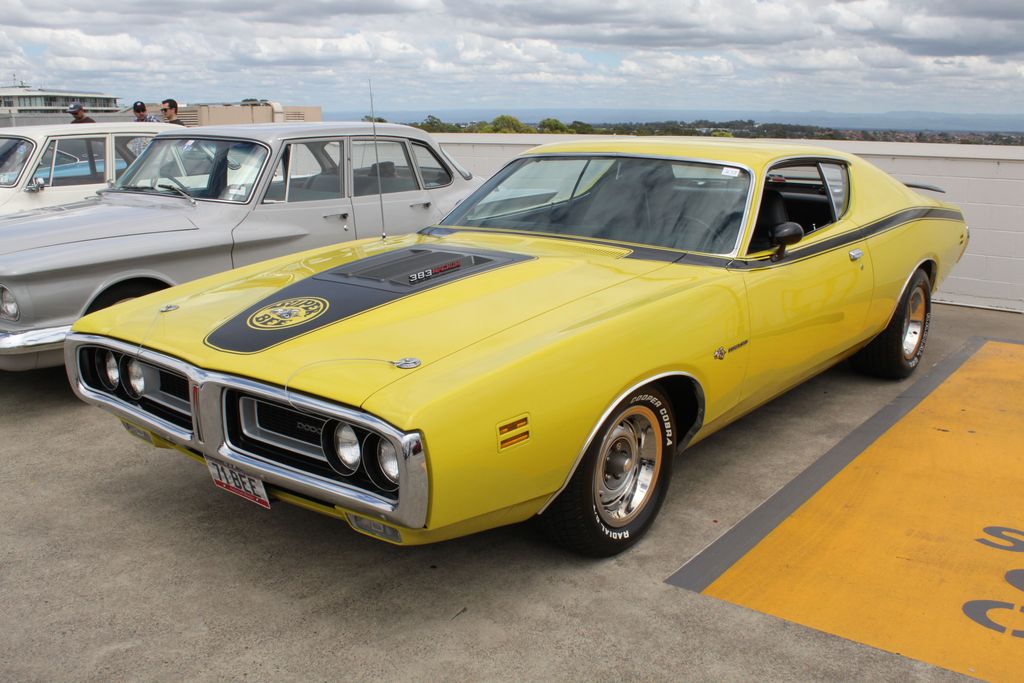
12. **The 1971 Dodge Charger Super Bee**Continuing our descent into the realm of questionable design decisions, we arrive at the 1971 Dodge Charger Super Bee. This was the era where Dodge, following “one of history’s most iconic muscle car designs,” decided it was time for a radical departure. The result was a design that “increased the visual weight” significantly, moving away from the lean, aggressive lines that had made its predecessors so beloved.
Perhaps the most contentious feature was the “split grille that fans compared to a whale’s mouth.” This wide, gaping maw at the front of the car gave it an almost aquatic, rather than asphalt-eating, appearance. It was a bold aesthetic choice, but one that seemed to dilute the Charger’s inherent menace, replacing it with something more akin to a marine mammal passively cruising the ocean depths rather than tearing up the highway.
Dodge’s decision to “transfer the Super Bee badge from the Coronet to the Charger coincided with this controversial redesign,” a move that put the venerable performance nameplate onto a body that many felt lacked the visual punch it once commanded. The Super Bee, a name that once heralded blistering performance and aggressive looks, now adorned a car whose styling left many enthusiasts wondering what exactly the designers were thinking.
The 1971 Charger Super Bee is a classic example of how a redesign, even with the best intentions, can alienate a loyal fanbase. It had the potential for power, but its aesthetic evolution left much to be desired, cementing its place as a “controversial redesign” that simply failed to capture the magic of its predecessors. It’s a stark reminder that sometimes, classic designs are best left, well, classic.
Car Model Information: 2024 Ford F-150 XLT
Name: Dodge Super Bee
Manufacturer: Chrysler Corporation
Production: 1968–1971 , 1970–1980 (Mexico only) , 2007–2009 , 2012–2013
Layout: FR layout
Class: Muscle car
Caption: 1969 Dodge Coronet Super Bee A12 “Six Pack”
Categories: 1960s cars, 1970s cars, All articles needing additional references, All articles with dead external links, All articles with unsourced statements
Summary: The Dodge Super Bee is a mid-sized muscle car marketed by Dodge, that was produced for the 1968 through 1971 model years.
In Mexico, the Super Bee was based on a compact-sized Chrysler platform and marketed from 1970 until 1980.
The Super Bee model name was resurrected for the 2007, 2008, 2009, 2012, and 2013 Dodge Charger Super Bee models.
Get more information about: Dodge Super Bee
Buying a high-performing used car >>>
Brand: Dodge Model: Charger Super Bee
Price: $41,604 Mileage: 9,645 mi.
Read more about: Gone But Not Forgotten: Unearthing the Stories Behind 14 Iconic American Cars That Drove Off into the Sunset

13. **The 1975 Ford Elite**Next, we encounter a car that perfectly encapsulates Ford’s disoriented direction during the mid-70s: the 1975 Ford Elite. Marketed as a “personal luxury muscle car,” the Elite stumbled awkwardly between two worlds, gaining weight while simultaneously “losing power and style.” It was a grand statement that, unfortunately, spoke volumes about confusion rather than class.
The Elite was a veritable showcase of mid-70s automotive excess, adorned with “excess chrome, opera windows, and vinyl roofs.” These were stylistic flourishes often associated with formal luxury cars, incongruously applied to something aspiring to be a performance vehicle. The opera windows, in particular, felt utterly out of place, breaking the flow of the design and making the car look less like a sleek performer and more like a land yacht with pretensions of sportiness.
Despite being positioned as a “prestige vehicle,” the Elite couldn’t escape the glaring truth: it was “essentially an underpowered Torino.” This fundamental disconnect between its luxurious aspirations and its pedestrian underpinnings, combined with its visually heavy and somewhat clumsy styling, earned it a spot on our list. It was an attempt to merge two disparate automotive ideals, resulting in a vehicle that felt neither truly luxurious nor genuinely muscular.
The 1975 Ford Elite serves as a fascinating, if regrettable, case study in design evolution. It highlights how manufacturers, in trying to capture multiple market segments, can sometimes create a car that satisfies none of them completely. Its collection of ill-fitting aesthetic choices, combined with its identity crisis, makes it a true head-scratcher from an era of questionable automotive fashion.
Car Model Information: 2023 Ford Escape ST-Line Elite
Caption: 1976 Ford Elite 2-Door Hardtop
Name: Ford Gran Torino Elite , Ford Elite
Manufacturer: Ford Motor Company
Production: 1974–1976
ModelYears: 1974 (Gran Torino Elite) , 1975–1976 (Elite)
Assembly: Chicago, Illinois
Class: Personal luxury car
BodyStyle: coupe
Layout: FR layout
Engine: 351 cuin
Abbr: on
Transmission: Automatic transmission
Wheelbase: 114 in
Related: Ford Torino,Mercury Cougar#Third generation (1974–1976),Mercury Montego#Second generation (1972–1976)
Successor: Ford Thunderbird (seventh generation),Ford LTD II
Categories: Articles with short description, Cars introduced in 1974, Commons category link from Wikidata, Coupés, Ford vehicles
Summary: The Ford Elite is a personal luxury car produced by Ford and marketed in North America from February 1974 to 1976, using the name Gran Torino Elite for its first model year only then simplified to just Elite for the following two model years.
Get more information about: Ford Elite
Buying a high-performing used car >>>
Brand: Ford Model: Elite
Price: $28,592 Mileage: 20,008 mi.
Read more about: The Enduring Gravitas: Unpacking the Storied Life and Legacy of Tommy Lee Jones
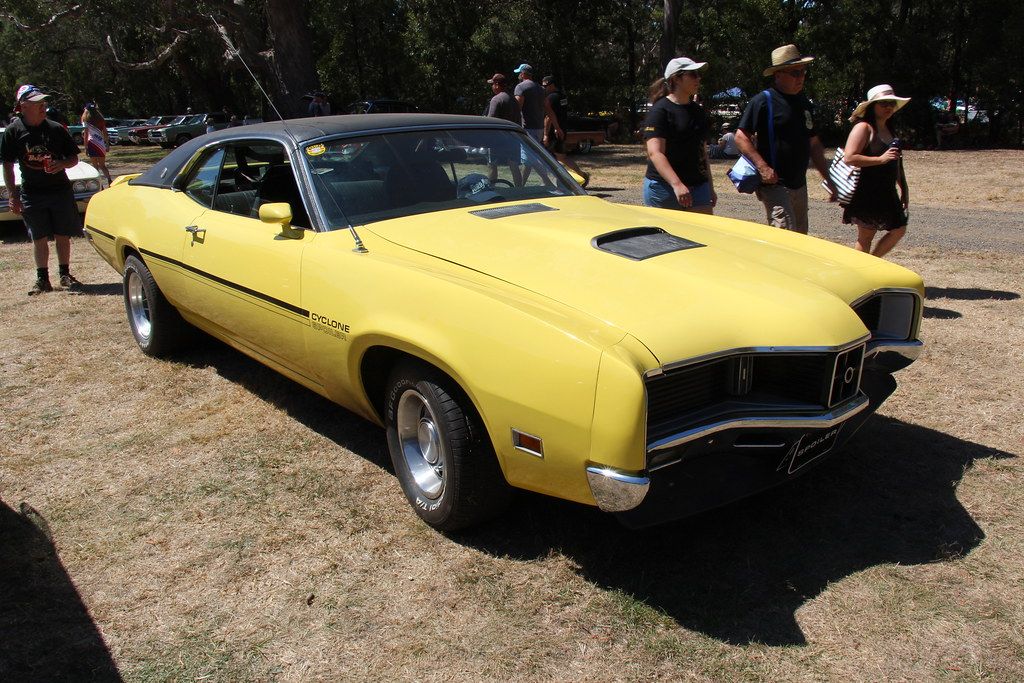
14. **The 1970 Mercury Cyclone Spoiler**For our penultimate entry, we turn to Mercury’s fascinating, if visually challenging, approach to aerodynamics: the 1970 Mercury Cyclone Spoiler. This is a car whose very name hints at its performance aspirations, but whose front end design resulted in “one of the strangest front ends ever bolted onto a production automobile.” It was a masterclass in functional ugliness.
The Cyclone Spoiler featured a “pointed nose and recessed headlights,” creating a face that was, to put it mildly, unconventional. It looked less like a car ready to dominate the strip and more like an anteater in a very aggressive stance. The design prioritized airflow and high-speed stability over conventional notions of beauty, resulting in a visage that “only an engineer could love.” For the average enthusiast, it was a profound puzzle.
While “wind tunnel testing may have proven the layout effective,” it’s clear that “aesthetic considerations were secondary.” This stark separation between performance efficacy and visual appeal is what makes the Cyclone Spoiler so remarkable. It stands as a powerful example of a car where the engineers were given free rein, and the designers were, perhaps, told to simply make it work, regardless of how it looked.
The 1970 Mercury Cyclone Spoiler is a testament to the extremes manufacturers would go to gain an edge, even if it meant sacrificing visual harmony. It’s a truly unique, undeniably strange, and yet historically significant piece of automotive design. It wasn’t merely awkward; it was a deliberate statement of function over form, and one that continues to spark debate and bewilderment in equal measure.
Car Model Information: 2024 Ford F-150 XLT
Name: Mercury Cyclone Spoiler II
Manufacturer: Mercury (division)
Aka: Ford Torino Talladega
Production: 1969
ModelYears: 1969
Class: Race car
BodyStyle: fastback
Layout: FR layout
Designer: FoMoCo
Categories: All articles needing additional references, All articles with unsourced statements, Articles needing additional references from July 2025, Articles with short description, Articles with unsourced statements from April 2025
Summary: The Mercury Cyclone Spoiler II is a muscle car that was produced by Mercury in early 1969. The Mercury Cyclone Spoiler II was a special, more aerodynamic version of the Mercury Cyclone. It was produced specifically to compete against the Dodge Charger Daytona and Plymouth Superbird produced by Chrysler, and the nearly identical Ford Torino Talladega, in NASCAR stock car racing, and was sold to the public only because homologation rules required a minimum number of cars (500 in 1969) be produced and made available for sale to the public. A total of 503 cars were built in both Yarborough (285) and Gurney (215) versions, a during the first few weeks of 1969.
Get more information about: Mercury Cyclone Spoiler II
Buying a high-performing used car >>>
Brand: Mercury Model: Cyclone Spoiler
Price: $41,604 Mileage: 9,645 mi.
Read more about: Unleash the Beasts: 14 Legendary American Cars That Roared Through the 1960s, Forging an Unforgettable Automotive Decade
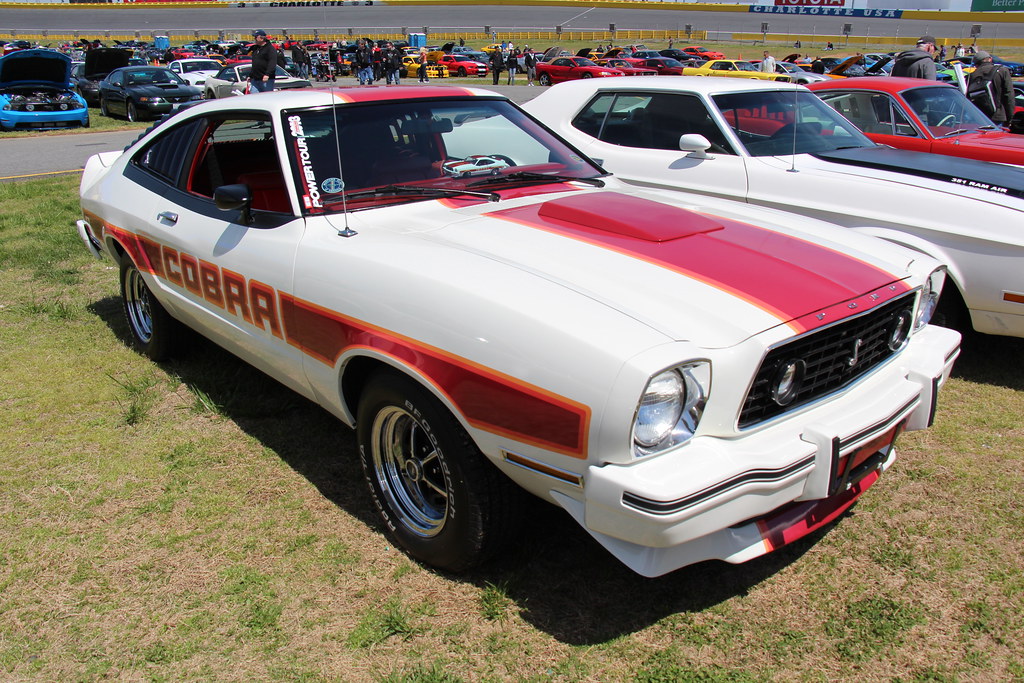
15. **The 1974 Ford Mustang II Mach 1**Finally, we arrive at what many consider the absolute “aesthetic nadir” of Ford’s legendary pony car: the 1974 Ford Mustang II Mach 1. This was a car that, by its very existence, seemed to betray the powerful, muscular heritage of the Mustang name. It wasn’t just a disappointment; it was, for many, an insult wrapped in peculiar styling.
The fundamental flaw began with its platform, being “based on the humble Pinto platform.” This immediately set the stage for a car that would struggle to embody the muscular spirit. And indeed, under the hood, the “comically small 2.8-liter V6 generated just 105 horsepower,” a figure that would make many modern lawnmowers scoff. To adorn such an underpowered pretender with “wild graphics and spoilers” felt like “false advertising” of the highest order.
Imagine the frustration: a Mustang, wearing the iconic Mach 1 badge, yet struggling to get out of its own way. The aggressive visuals promised a beast, but delivered a whimper. This was a direct consequence of Ford president Lee Iacocca’s demand for “the downsized Mustang,” a decision that, while perhaps economically sound at the time, stripped the car of its soul and its visual integrity as a muscle car.
The 1974 Mustang II Mach 1 represents a pivotal, and largely regrettable, moment in muscle car history. It’s a car that had all the aesthetic trappings of performance – the bold graphics, the spoilers – but none of the actual grunt to back them up. It perfectly encapsulates the era’s struggles with identity, proving that even the most hallowed names can, at times, lose their way, creating a car that was truly “an underpowered pretender” in every sense.
Car Model Information: 2024 Ford F-150 XLT
Name: Second generation
Caption: Ford Mustang II coupe
Aka: Ford Mustang II , Ford T5 (in Germany)
Class: Pony car,Subcompact car
Production: 1973–1978
ModelYears: 1974–1978
Predecessor: Ford Mustang (first generation)
Successor: Ford Mustang (third generation)
Assembly: Unbulleted list
Layout: Front-engine, rear-wheel-drive layout
BodyStyle: coupé,hatchback
Related: Ford Pinto,Ford Pinto
Manufacturer: Ford Motor Company
Engine: ubl
Transmission: ubl
Wheelbase: cvt
Length: cvt
Width: cvt
Height: cvt
Designer: Buck Mook, Dick Nesbitt
Categories: All articles with dead external links, All articles with unsourced statements, Articles with dead external links from April 2024, Articles with permanently dead external links, Articles with short description
Summary: The second-generation Ford Mustang, marketed as the Ford Mustang II, is a two- or three-door, four-passenger, front-engine/rear-drive pony car manufactured and marketed by Ford from 1973 until 1978. Introduced in September 1973 for the 1974 model year, the Mustang II arrived roughly coincident with the oil embargo of 1973 and subsequent fuel shortages. Developed under Lee Iacocca, it was an “entirely new kind of pony car.” Ford “decided to call it Mustang II, since it was a new type of pony car designed for an era of high gas prices and fuel shortages.”
The Mustang II was 490 lb (222 kg) lighter and almost 19 in (483 mm) shorter than the 1973 Mustang, and derived from the subcompact Pinto platform. While sharing a limited number of driveline components with the Pinto, the Mustang II employed an exclusive subframe, isolating its front suspension and engine mount subframe. The steering used a rack-and-pinion design.
Named Motor Trend’s 1974 Car of the Year and reaching over 1.1 million sales over four years of production, the Mustang II is noted simultaneously for both its marketing prescience and strong sales – while criticized as having abandoned essential aspects of the Mustang heritage and described, in a retrospective after 40 years since its introduction, as embodying the Malaise era.
Get more information about: Ford Mustang (second generation)
Buying a high-performing used car >>>
Brand: Ford Model: Mustang II
Price: $41,604 Mileage: 9,645 mi.
Read more about: Beyond the Legends: 15 Affordable Classic Pontiacs Every Enthusiast Should Consider for Their Garage
And so, our journey through the less-than-illustrious chapters of muscle car history concludes. From the anemic V8s of the early 80s to the bewildering aesthetic choices of the 70s, we’ve witnessed a collection of vehicles that, for one reason or another, missed the mark spectacularly. These weren’t just cars; they were cautionary tales, stark reminders that even in the pursuit of raw power and undeniable swagger, things can, and often do, go hilariously wrong. But even in their flaws, there’s a perverse charm, a valuable lesson in what *not* to do when crafting a legend. So, next time you see one of these automotive anomalies, give it a knowing nod. For in its imperfections, it tells a story as compelling, and perhaps even more memorable, than any roaring success.

